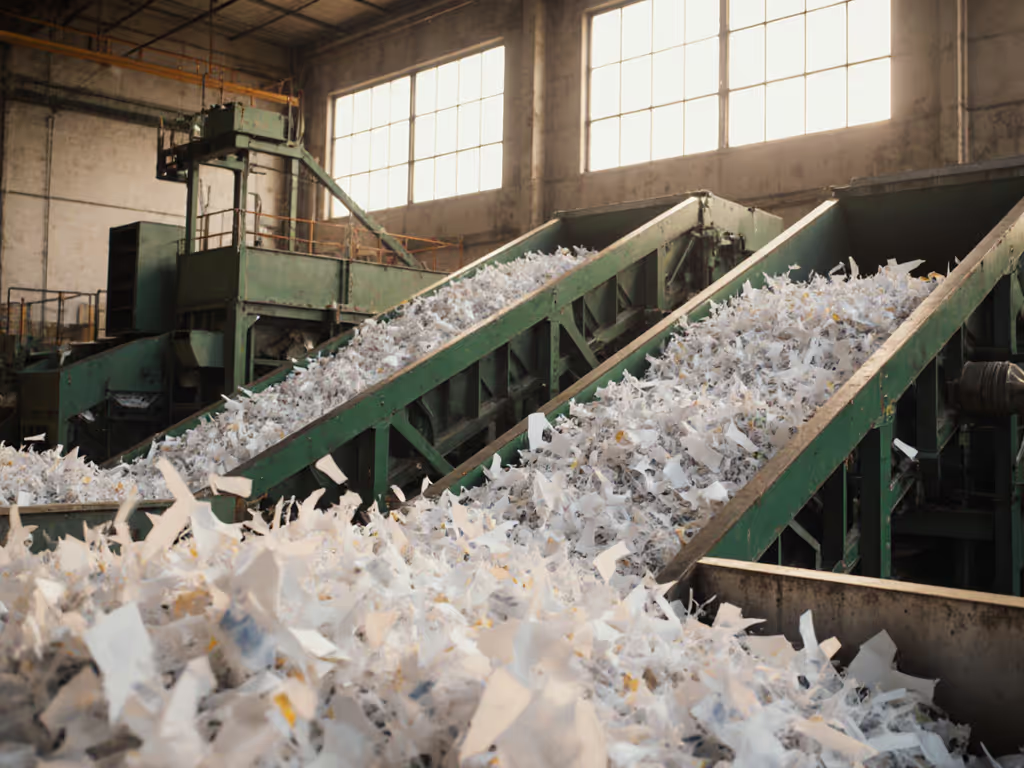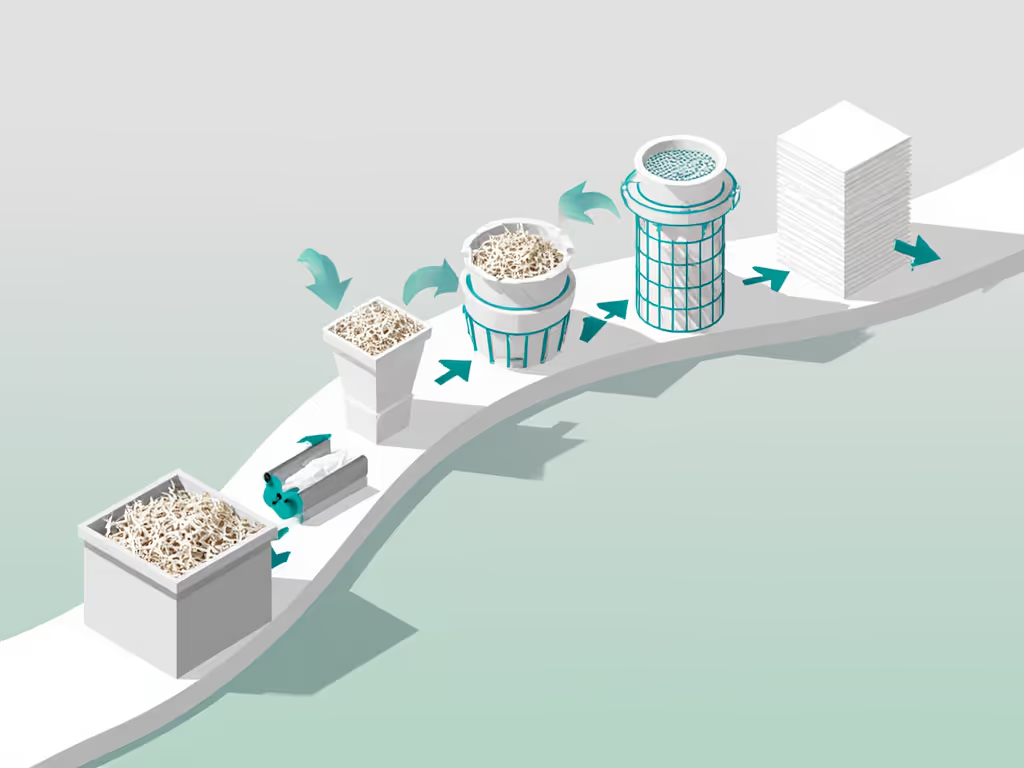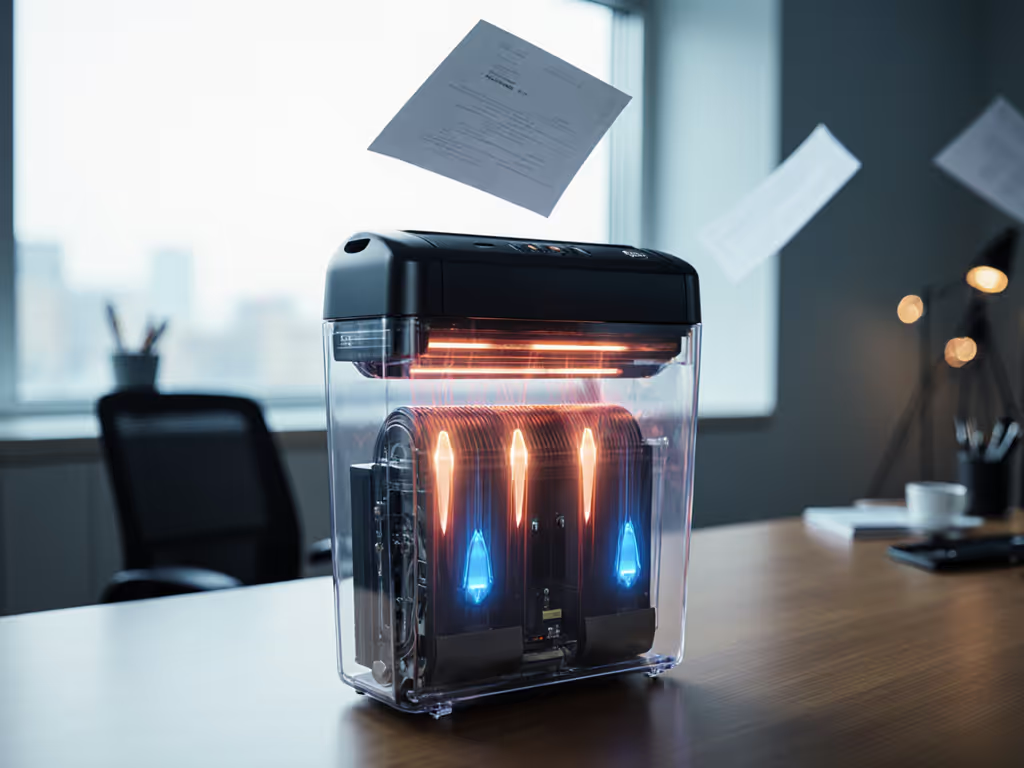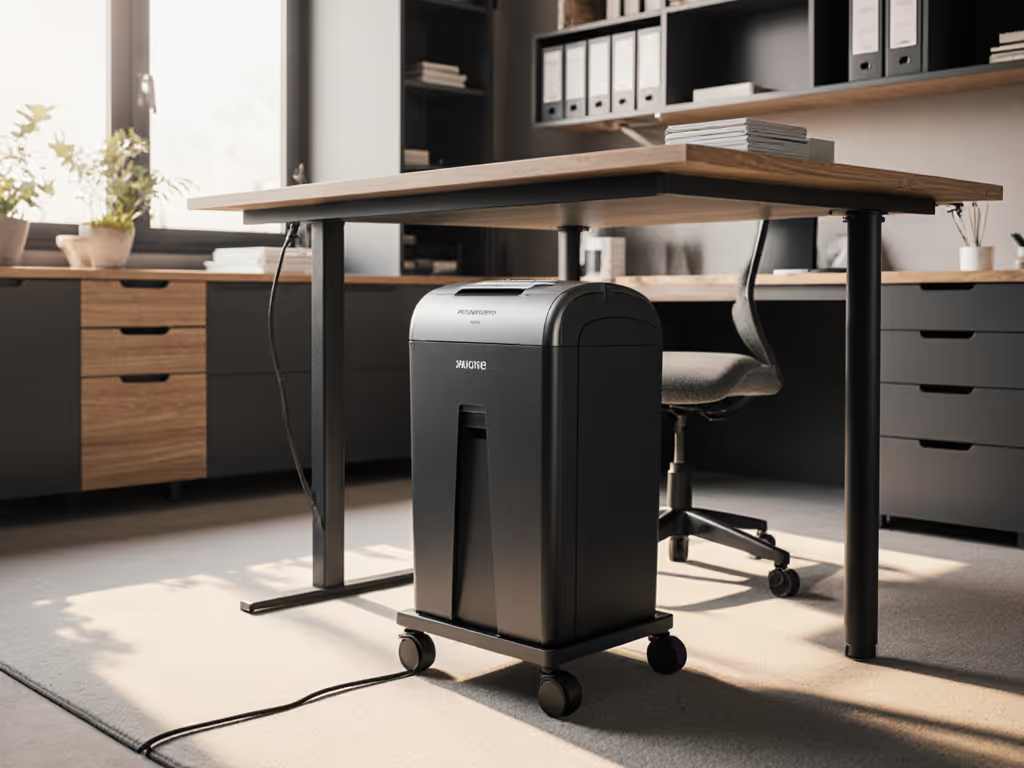
Eco-Friendly Shredding: How Shredded Paper Recycles Efficiently

As professionals managing sensitive documents in healthcare, finance, and legal sectors, we understand that eco-friendly shredding isn't just an environmental consideration; it's a critical component of responsible information governance. When properly executed, shredded paper recycling completes the sustainability loop while maintaining appropriate security standards. This article examines the technical journey of shredded paper through the recycling ecosystem, demonstrating how security and sustainability can coexist through right-sized document destruction practices.
Understanding the Paper Recycling Process
How does shredded paper actually get recycled?
The recycling process begins the moment paper enters the shredder. Conventional wisdom suggests that shredded paper presents recycling challenges, but the reality is quite different when handled properly. Shredded paper actually enters the recycling stream more efficiently than intact documents because the reduced particle size accelerates decomposition in the pulping process.
Here's the technical journey:
- Collection: Properly sorted shredded paper (without plastic bags or containers) is collected for recycling
- Sortation: At recycling facilities, paper is separated from contaminants using optical scanners and mechanical sorting
- Pulping: Shredded paper skips the initial chopping stage required for whole paper, saving energy
- De-inking: Ink removal processes work more effectively on smaller particles
- Reconstitution: The pulp is formed into new paper products with significantly lower energy requirements
Research confirms that paper recycling requires approximately 60% less energy than virgin paper production. This efficiency gain is amplified when starting with pre-shredded material, making secure document destruction a logical step in sustainable paper management.
What's the environmental impact of different shredding methods?
The environmental impact of shredders varies significantly based on technology and implementation. Strip-cut shredders (DIN P-1/P-2) typically require less energy per page but produce longer strips that complicate the recycling process. Cross-cut (P-3/P-4) and micro-cut (P-5/P-6/P-7) methods use more energy initially but create particles ideal for efficient repulping.
Energy consumption data from recent industry studies shows:
- Basic strip-cut: 1.8 kWh per 1,000 sheets
- Cross-cut (P-4): 2.3 kWh per 1,000 sheets
- Micro-cut (P-5): 3.1 kWh per 1,000 sheets
However, this initial energy expenditure is offset during recycling. The smaller particles from higher DIN level shredding reduce processing energy at recycling facilities by approximately 15-20% compared to strip-cut paper. This creates a net positive energy balance when considering the full lifecycle. For a clear breakdown of P-1 to P-7 classifications, read our shredder security levels guide.
During a records audit at a regional clinic, our straightforward approach (mapping document categories to appropriate DIN levels with proper recycling protocols) was executed so consistently that the auditor barely paused to review it. Good privacy practice, when properly designed, becomes boringly reliable. No drama, just the right cut, used consistently, with simple proofs of proper recycling.
Security Meets Sustainability
How do I match document sensitivity to appropriate shredding while maintaining eco-friendly practices?
The key to effective sustainable document destruction lies in risk-based decision making. Not every document requires the highest security level, and over-shredding wastes energy unnecessarily. By implementing risk category mapping that aligns security requirements with environmental impact, organizations can achieve Security without theater.
| Document Type | Risk Level | Recommended DIN Level | Recycling Impact |
|---|---|---|---|
| Personal notes, draft documents | Low | P-2 (Strip-cut) | Lowest energy consumption |
| Client correspondence, internal memos | Medium | P-4 (Cross-cut) | Optimal balance of security and recycling efficiency |
| Financial records, medical information | High | P-5 (Micro-cut) | Highest security with excellent recycling properties |
| Classified government documents | Critical | P-7 (High-security) | Necessary despite higher energy use |
Verbatim allusion: Match the document risk to the shred, not the hype. This principle serves both security and sustainability objectives, and applying only the necessary security level prevents unnecessary energy expenditure while maintaining appropriate protection.
What energy considerations should inform my shredding practices?
Energy efficiency extends beyond the shredding machine itself. Consider these factors for comprehensive green shredding practices:
- Equipment selection: Choose ENERGY STAR-certified shredders that automatically enter low-power mode
- Batch processing: Consolidate shredding tasks to minimize startup energy consumption
- Off-peak operation: Schedule high-volume shredding during non-peak electricity hours
- Right-sized equipment: Using a commercial shredder for home-office volumes wastes significant energy
Mobile shredding services have made notable strides in sustainability. Many now operate hybrid or electric collection vehicles, reducing emissions by up to 40% compared to conventional diesel trucks. These services also typically achieve higher recycling rates through direct partnerships with paper mills.

Practical Implementation for Offices and Homes
How does chain-of-custody apply to recycled paper?
Proper chain-of-custody reminders don't end at the shredder bin. For true eco-friendly compliance, organizations must track shredded material through the recycling process. This involves:
- Partnering with certified recycling facilities that provide documentation
- Maintaining records of recycling volumes and destinations
- Verifying that processors adhere to environmental standards
- Implementing audit trails for recycled materials
In regulated environments, these protocols serve dual purposes: meeting compliance requirements while ensuring environmental commitments are fulfilled. Your plain-language audit notes should document both the security destruction and the subsequent recycling pathway.
What practical steps can I take toward greener shredding?
For home offices and small businesses, effective sustainable document destruction requires practical adjustments:
- Container selection: Use cardboard collection boxes instead of plastic bags for shredded paper
- Material separation: Keep shredded paper separate from other recyclables to prevent contamination
- Volume management: Balance between shredding frequency and collection efficiency
- Education: Train staff on proper sorting to minimize contamination
For home vs. office policy pointers, consider that residential recycling programs often have different requirements than commercial services. Many municipalities now accept properly contained shredded paper in curbside recycling, but packaging requirements vary, so always check local guidelines.
Match the document risk to the shred, not the hype. This approach ensures you're neither under-protecting sensitive information nor wasting resources on unnecessary security measures.
Conclusion: The Sustainable Path Forward
Eco-friendly shredding represents the intersection of information security and environmental responsibility. By understanding the paper recycling process and implementing appropriate DIN level spelled out destruction, based on actual risk, organizations can achieve meaningful sustainability gains without compromising security.
The most effective programs don't chase the latest shredding innovations but instead implement consistent, well-documented practices that match security requirements to environmental impact. When your documentation shows proper risk category mapping and verified recycling pathways, you've achieved Security without theater (a system so reliable it becomes uneventful).
To further explore how your specific document types might align with optimal shredding practices while supporting sustainability goals, consult your local recycling authority's guidelines and review your organization's information classification framework. The perfect balance between security and sustainability awaits your discovery, right where careful planning meets environmental responsibility.
Related Articles





